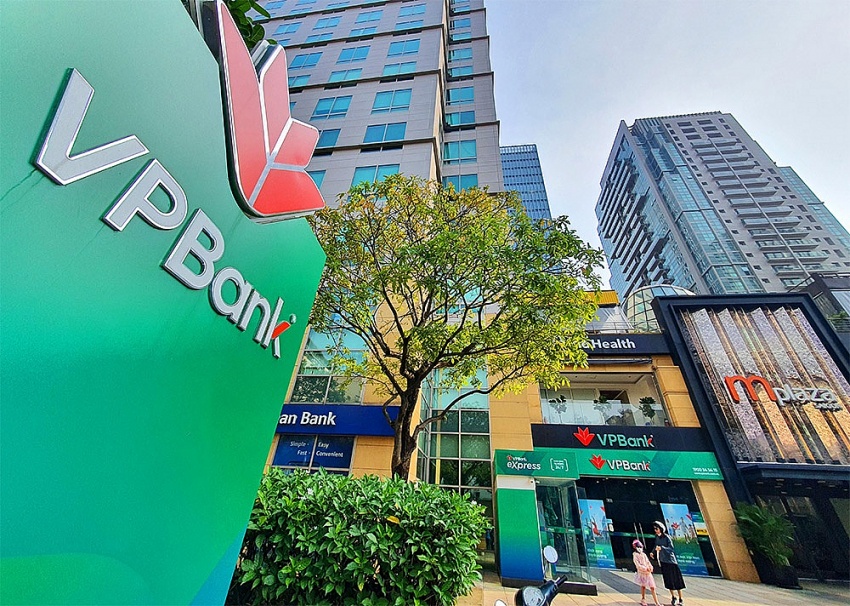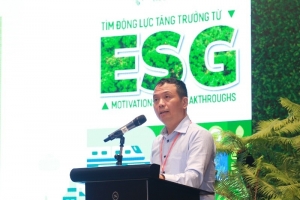Inefficiencies remain with ESG in banking
Pham Thi Thanh Tung, deputy director of the Department of Credit for Economic Sectors at the State Bank of Vietnam (SBV), highlighted its comprehensive measures to foster green banking and credit at last week’s seminar on promoting environmental, social, and governance (ESG) practices in the sector.
 |
| Inefficiencies remain with ESG in banking, Photo Le Toan |
The measures include flexible and coordinated monetary policy tools, developing a strategic plan for green banking, and issuing guidelines for green credit and ESG practices.
“Credit institutions have proactively collaborated with international financial organisations to secure green funding and technical support,” said Tung. “They have established internal regulations for managing environmental and social risks in lending activities and have made significant efforts to invest in green credit.”
According to Tung, up to 90 per cent of Vietnam’s banks have incorporated ESG practices to some extent, with nearly half establishing dedicated risk management departments for green lending. Some banks have also introduced green credit frameworks and sustainable loan frameworks to manage and utilise funds for environmentally friendly projects.
As of March 31, 47 credit institutions reported green credit outstanding loans amounting to nearly $25.6 billion, representing approximately 4.6 per cent of the total outstanding loans in the economy. Additionally, 34 institutions reported conducting environmental and social risk assessments for loans totalling around $116 billion, accounting for nearly 21 per cent of total outstanding loans.
The SBV’s environmental risk assessment results, as per December 2022, indicated that most credit institutions have integrated environmental risk management into their lending and risk management processes. Notably, 35 institutions have issued specific regulations for environmental risk management.
Tung also highlighted the growing interest in developing dedicated environmental risk management departments. “Nearly a dozen institutions have established separate environmental and social risk management departments or sustainability subcommittees,” she noted. “These departments are involved in reassessing loans for projects with medium to high environmental risks.”
Despite these advancements, the banking sector faces significant challenges in keeping up with ESG standards. Dr. Pham Minh Tu, deputy director of the Banking Strategy Institute under the SBV, identified three groups: those pioneering in ESG implementation like BIDV, VCB, VPBank, and Home Credit; those preparing their related plans; and foreign banks following their parent companies’ frameworks.
“Currently, even the most pioneering banks in Vietnam are still in the early stages of implementation. Catching up with ESG standards presents significant challenges for these banks,” he remarked.
Elaborating on the challenges in implementation from a regulatory perspective, Tu noted that there is no national standard for green project criteria across various sectors, which complicates the comprehensive identification and reporting of green credit resources. “The substantial capital required to achieve the National Green Growth Strategy is another hurdle,” Tu noted. “The financial market and carbon credit market are underdeveloped, creating long-term funding pressures for the banking system.”
He added that the limited governance capacity and strategic vision regarding ESG among enterprises, particularly small- and medium-sized enterprises, pose significant barriers. “These challenges hinder the transition to sustainable business models and the effective implementation of ESG practices, impacting the lending efficiency and risk management of credit institutions,” he explained.
Dr. Nguyen Thi Thu Ha, deputy head of the ESG Steering Committee at Agribank, believed that implementing ESG in Vietnam faces many internal and external challenges within the banking sector.
“Internally, green lending requires in-depth environmental technical expertise, posing difficulties for credit officers in assessing project effectiveness and repayment capabilities,” Ha said.
Externally, she continued, investing in green sectors often involves long payback periods and high initial costs, while banks typically have short-term mobilised capital. This mismatch creates difficulties in balancing funds and adhering to regulations on short-term capital for medium- and long-term loans.
“Another issue is whether customers have collateral, and if not, whether the bank will approve the loan,” Ha said.
Pham Do Nhat Vinh, consulting partner and head of Financial Services at KPMG Vietnam, stated, “In the past 2-3 years, banks have increasingly embraced ESG, from top leadership to the board of directors and individual departments. However, the practical application of this among Vietnamese credit institutions remains quite limited due to numerous challenges.”
Vinh highlighted specific difficulties such as the lack of data, policy frameworks, and risk management systems. A major challenge is the scarcity of human resources with sufficient knowledge and skills to support credit institutions.
“Banks are beginning their ESG journey with annual reports, aiming to produce sustainability reports as they mature. However, collecting ESG-related data requires substantial resources, and achieving automated reporting is still a long way off,” he noted. “Even a comprehensive standard for green project lists and green funding sources is still lacking.”
 | How to best navigate the ESG challenges in banking Environmental, social, and governance (ESG) considerations have become increasingly integral to investing and corporate strategies across industries, especially the financial sector. |
 | ESG funding for sustainable growth In the landscape of modern business, environmental, social, and governance (ESG) considerations have become key factors shaping corporate strategies and investing decisions. Vietnam stands at a crucial juncture where embracing ESG principles is essential for sustainable development and for maintaining competitiveness in the international market. |
 | Most businesses aware of ESG: report The majority of businesses are aware of their environmental, social, and governance (ESG) responsibilities, but are unsure how to implement them, according to a leader of the Agency for Enterprise Development. |
 | ESG can help businesses improve their brand image and market position Nguyen Tu Anh, director of the Centre for Economic Information, Analysis and Forecasting, Central Economic Commission, believes implementing environmental, social, and governance (ESG) practices makes it easier for businesses to succeed in a world where societal awareness of environmental and community issues is increasing. |
What the stars mean:
★ Poor ★ ★ Promising ★★★ Good ★★★★ Very good ★★★★★ Exceptional
 Tag:
Tag:
Related Contents
Latest News
More News
- Tax sector wraps up 2025 and sets priorities for next year (December 25, 2025 | 14:00)
- A tipping point for digital and hybrid wealth management in Vietnam (December 23, 2025 | 13:33)
- $250 million deal targets women-owned SMEs, sustainable agriculture (December 22, 2025 | 17:40)
- Stock market posts resilient 2025 performance (December 19, 2025 | 18:17)
- Citi Vietnam receives 2025 AmCham CSR recognition (December 19, 2025 | 16:35)
- As global green supply chain reshapes, will Vietnam be left behind? (December 19, 2025 | 08:00)
- Banks gear up for massive capital increases (December 18, 2025 | 17:04)
- Securing capital and efficiency for Vietnam’s 2026-2030 growth ambitions (December 17, 2025 | 10:00)
- Energy sector in need of blended finance mechanisms (December 17, 2025 | 09:00)
- Vietnam still has room to mobilise capital for sustainable growth (December 17, 2025 | 08:57)























 Mobile Version
Mobile Version